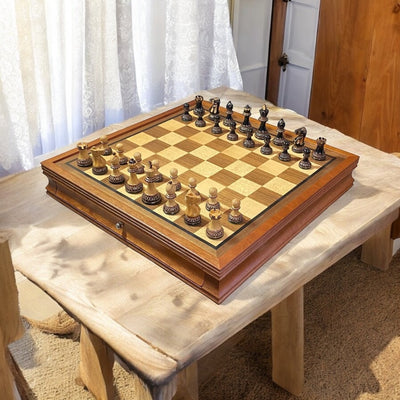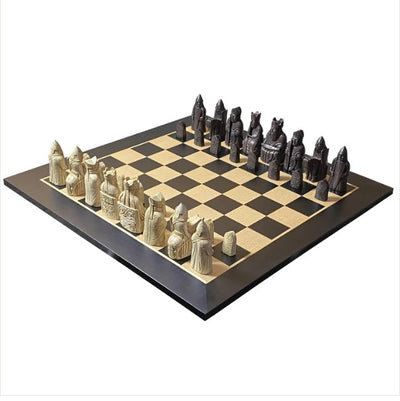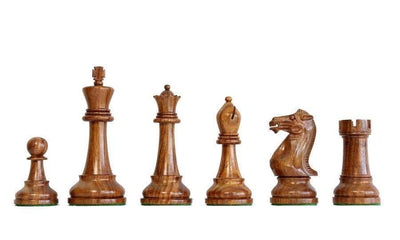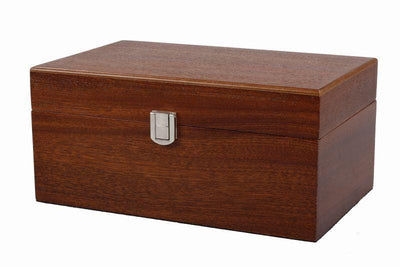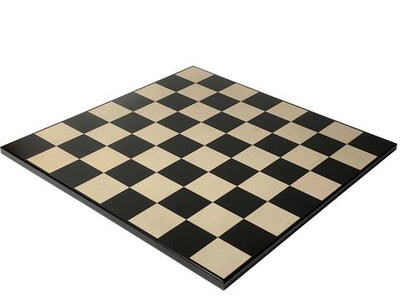Unraveling the World of Tournament Chess Sets: From Classic to Modern Marvels
Chess, a timeless game of strategy and intellect, has captured the hearts of millions worldwide. As players step onto the grand stage of tournaments, the choice of chess set becomes crucial, merging aesthetics, functionality, and tradition. In this blog, we'll explore the fascinating world of tournament chess sets, from the classic and beloved Staunton design to modern marvels that cater to the evolving needs of players and organisers.
- The Classic Staunton Chess Set:
The Staunton chess set, designed by Nathaniel Cook in 1849 and named after Howard Staunton, is the quintessential representation of tournament chess sets. Its standardised design, with recognisable and elegant pieces, allows players to focus on the game without distractions. The Staunton set has stood the test of time, remaining the most preferred choice for both amateurs and professionals.
- Timeless Wooden Beauty:
Wooden chess sets continue to hold a special place in the hearts of chess enthusiasts. Crafted from various wood types like ebony, rosewood, and boxwood, these sets exude natural beauty and craftsmanship. Tournament organizers often choose wooden sets for their traditional charm and the satisfying feeling they impart while handling the pieces during intense matches.
- Modern Innovation: Plastic and Silicone Sets:
As tournaments evolved, so did the materials used for chess sets. Plastic and silicone sets have gained popularity due to their durability, ease of cleaning, and affordability. They provide a practical solution for large-scale events with the added advantage of portability, making them ideal for players who travel often.
- High-Tech Marvels: Electronic Chess Sets:
In the digital age, electronic chess sets have found their place in tournaments. These sets come equipped with built-in chess engines, allowing players to practice and analyse their games on the board itself. The integration of digital clocks, move notation, and connectivity features has revolutionised the way tournaments are conducted, offering a new dimension to the chess-playing experience.
- Themed Chess Sets: Unleashing Creativity:
Tournament organisers often embrace creativity by introducing themed chess sets. These sets can range from historical figures to fantasy characters, bringing an element of novelty to the game. While not always used in high-stakes competitions, themed sets add a touch of fun and uniqueness to exhibition matches and special events.
- Accessibility and Inclusivity:
As chess continues to strive for inclusivity, tournament organisers have recognised the need to accommodate visually impaired players. Specialised tactile chess sets with distinct textures on the pieces and the board allow visually impaired players to engage in competitive chess with confidence, contributing to a more diverse and enriched chess community.
What size is a tournament chess set?
In official tournament play, the size of a tournament chess set can vary, but there are some general standards that are commonly used. The most typical size for tournament chess sets is the standard Staunton design, where the king's height measures around 3.75 to 4.25 inches (9.5 to 10.8 centimeters). The other pieces are proportionally sized accordingly, with the queen being slightly smaller than the king and the pawns being the shortest pieces.
The board used in tournaments usually has 64 squares in an 8x8 grid, and the squares' size typically ranges from 2.25 to 2.375 inches (5.7 to 6.0 centimeters) on each side. This ensures a well-proportioned and comfortable playing experience for the players during competitive matches.
It's important to note that while these dimensions are widely accepted for official tournaments, local events and informal play may utilize slightly different sizes. However, the key is to maintain a balance between practicality, aesthetics, and ensuring that players can comfortably focus on the game without being hindered by overly small or large pieces and boards.


